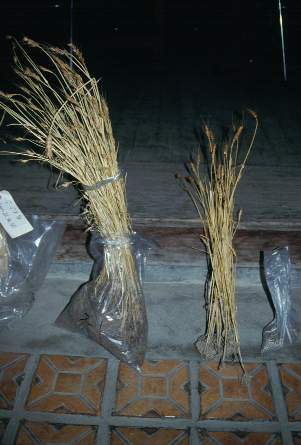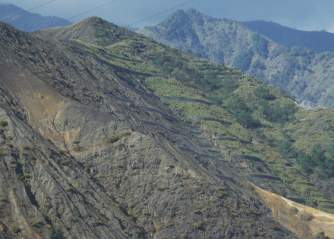 Ashio Mining
Ashio Mining Ashio Mining
Ashio Mining
Ashio copper mine is one of the earliest pollution cases in Japan. The pollution was recognized in 1885, when many fishes in the Watarase River were dead because of water pollution. The sludge from the mine caused the occasional flood. The heavy metal discharged into the river reduced the production of rice. The health damage was not recorded, because it was difficult to identify the health damage from heavy metals.
The anti-pollution movement was started in 1890. The government abandoned one village and made flood control area. But it was not a solution of the problem.
![]() The production loss in Morita
The production loss in Morita 
In 1958, Gengoro dam for sludge was collapsed. The rice field in Morita was heavily contaminated with heavy metals such as copper, cadmium, lead and so forth. The production of rice is reduced. The reduction rate depends on the distance from the water entrance of the rice field, because the heavy metal is settled near water entrance more than near exit. The soil improvement activity has been conducted. The total area for soil improvement is 358.80ha.
Picture: The right hand side is the rice plant taken from contaminated field. The left-hand side is the rice plant after soil improvement. (Photo in 1993)
|
|
Entrance of water |
Center |
Exit of water |
|
Brown rice g/m2 |
241.0 |
343.6 |
436.7 |
|
% to average level |
48.9% |
77.8% |
80.0% |
Source: Watarase gawa koudoku konzetsu morita kisei doumei kai.
![]() Deforestation in Ashio
Deforestation in Ashio
The deforestation is occurred in the area around the Ashio copper processing plant. The processing plant used fuel woods, which was collected from the forest around the plant. The smoke from the plant also made soil acid. The government has replanted trees in the region, where the soil is totally flowed out.
Picture: Mountain area near Ashio processing Plant. (Photo in 1993)
Mining activity in Ashio was stopped in 1973. But discharged water from mining site contains heavy metals. The water treatment plant is still operated.
![]()